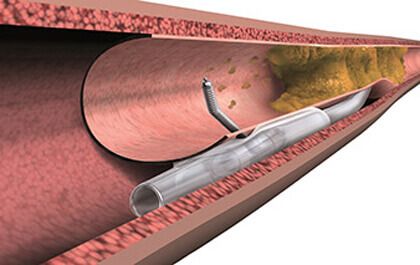Dyspnea is one of the most challenging symptoms as regards its assessment and treatment in patients with coronary disease, since it may stem from both cardiac and non-cardiac causes.
Patients in whom dyspnea is the sole symptom of coronary disease are at a higher risk of not receiving adequate treatment, and their short- and long-term outcomes are worse.
Read also: “Radiation Exposure in Chronic Total Occlusions”.
That explains why seeing dyspnea as an angina equivalent is sometimes hard. This can be even harder in a setting of chronic total occlusion.
The OPEN CTO registry (Outcomes, Patient health status, and Efficiency iN Chronic Total Occlusion) obtained data from 12 US experienced centers and included 987 patients undergoing angioplasty (procedure success: 82%) who were assessed with the Rose Dyspnea Scale (whose scores range from 0 to 4, with higher scores indicating more dyspnea with common activities).
A total of 800 patients (81%) reported some dyspnea at baseline with a mean Rose Dyspnea Scale of 2.8 ± 1.2. Dyspnea improvement was defined as a ≥1-point decrease in that scale.
Read also: “Should We Begin to Use IVUS in CTO?”
Patients with dyspnea were more frequently female, obese, and smokers, and had more comorbidities than those who experienced angina.
Among patients with baseline dyspnea, 70% reported some improvement after chronic total occlusion rechanneling.
Anemia, depression, and pulmonary disease were associated with less symptom improvement after angioplasty.
Conclusion
Dyspnea is a common symptom among patients with chronic total occlusion and improves significantly after successful rechanneling. Patients with other potentially non-cardiac causes of dyspnea reap less benefits from angioplasty.
Original title: Dyspnea Among Patients with Chronic Total Occlusions Undergoing Percutaneous Coronary Intervention: Prevalence and Predictors of Improvement.
Reference: Mohammed Qintar et al. Circ Cardiovasc Qual Outcomes. 2017 Dec;10(12).
Receba resumos com os últimos artigos científicosSubscreva-se a nossa newsletter semanal
Sua opinião nos interessa. Pode deixar abaixo seu comentário, reflexão, pergunta ou o que desejar. Será mais que bem-vindo.






